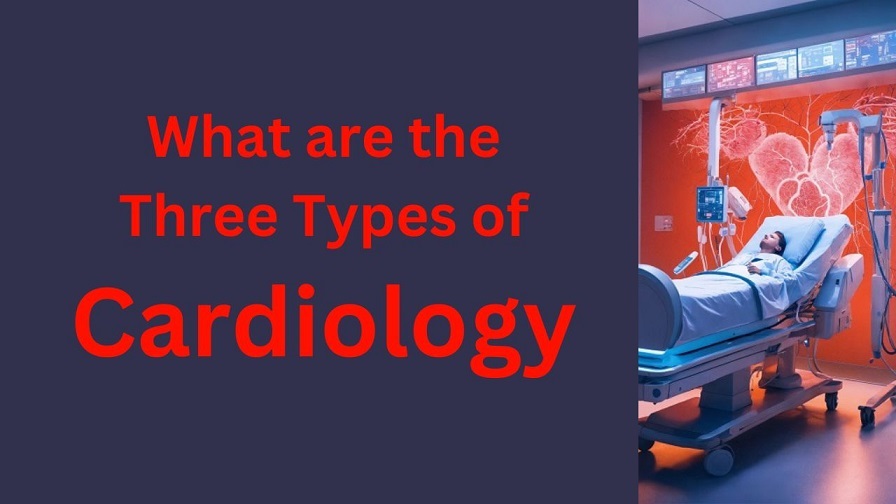What are the Three Types of Cardiology?
Cardiology is a branch of medicine focusing on diagnosing and treating disorders related to the heart and circulatory system. The American College of Cardiology recognizes three main types of cardiology:
- Adult Cardiology
- Pediatric Cardiology
- Cardiovascular/Interventional Cardiology
While all cardiologists share core training in internal medicine with subspecialization in heart diseases, there are essential differences in the patient populations and procedures performed across these three cardiology types.
Type 1: Adult Cardiology
Adult cardiology, also called general cardiology, focuses on providing care to adult patients, most commonly those over 18 years old. Adult cardiologists manage a wide range of cardiovascular conditions, including:
- Atherosclerosis (hardened arteries)
- Heart failure
- Coronary artery disease
- High blood pressure (hypertension)
- Heart valve disorders
- Heart infections (endocarditis)
- Aortic aneurysms and dissections
This cardiologist often coordinates overall heart care, working closely with primary care providers. To diagnose conditions, an adult cardiologist utilizes investigations like ECGs, stress tests, echo-cardiograms, cardiac CT, and lab work.
Treatment provided by an adult cardiologist may include advice on lifestyle changes related to diet, exercise, smoking cessation, and limiting alcohol intake. They often prescribe medications and monitor drug regimens targeting various cardiovascular risk factors.
Some also perform minor procedures if additional interventional treatment is needed. However, they refer patients needing major heart surgery or vascular interventions to specially trained sub-specialists.
Type 2: Pediatric Cardiology
Pediatric cardiologists limit their practice to providing cardiology care to infants, children, teenagers, and younger adults with congenital heart disease. A pediatric cardiologist typically sees patients from birth through around 21 years old.
Some conditions commonly managed by a pediatric cardiologist include:
- Congenital heart defects present at birth
- Kawasaki disease
- Irregular heart rhythms (arrhythmias)
- Heart muscle disorders (cardiomyopathies)
- High blood pressure disorders
- Heart infections
Pediatric cardiologists use specialized techniques to diagnose and treat younger patients. They are trained to handle smaller anatomy, navigating pediatric-sized catheters and tools. These specialists rely more on echocardiograms than other adult imaging modalities that use radiation or contrast dyes, which can harm children. Drug dosing and recommendations for surgery also differ significantly in younger populations.
Type 3: Cardiovascular/Interventional Cardiology
Cardiovascular or interventional cardiologists receive advanced specialty training focused on performing procedures to treat coronary artery and heart disease. Instead of open-heart surgery, they use catheter-based techniques called percutaneous interventions to improve blood flow and oxygen supply to the heart.
Examples of interventional cardiology procedures include:
- Cardiac catheterization (heart cath)
- Coronary angioplasty
- Stent implantation
- Balloon valvuloplasty
- Percutaneous valve replacement/repair
- Vascular angioplasty stenting
- Atherectomy
- Congenital heart defect closure
- Carotid artery stenting
- Electrophysiology studies and ablations
These minimally invasive interventions utilize real-time image guidance, usually with x-ray fluoroscopy, allowing visualization of the catheter movement through the cardiovascular system.
An interventional cardiologist relies on their technical skills and expert analysis of imaging feedback to safely navigate tools inside the heart and blood vessels, improving flow, opening narrowed passageways, or sealing problematic connections.
Specialized Training and Certification
In the United States, cardiologists must complete four years of medical school after college, three years of internal medicine residency, and three years of cardiology specialty training in a fellowship program. Passing rigorous written exams leads to board certification, indicating expertise in cardiovascular medicine.
Many cardiologists pursue additional 1 to 2-year subspecialty fellowships to gain focused experience in advanced domains like interventional cardiology, pediatric cardiology, adult congenital heart disease, advanced heart failure, electrophysiology, echocardiography, or nuclear imaging. These allow cardiologists to provide more specialized care catering to specific patient needs and interests.
Considerations When Choosing a Cardiologist
As patients, being aware of the three main cardiology types can help guide the selection process when needing to see a heart specialist. Considerations include:
Age – for adults over 21, an adult or interventional cardiologist is most appropriate, while a pediatric cardiologist should be chosen for infants/children.
Primary condition – pick a subspecialist whose training and expertise target the specific disease being managed.
Invasive treatment needs – select an interventional cardiologist for procedures like stent placement or ablation.
Comfort level – choose a doctor with a suitable bedside manner that answers questions thoroughly.
Early consultation with a qualified cardiologist facilitates rapid, accurate treatment, reducing the risk for severe cardiovascular complications like heart attacks or stroke.
With expertise in managing the intricate complexities of heart and blood vessel disorders, they are equipped to help patients of all ages optimize heart health during all life stages.
Thank you for visiting Jobs Ada







